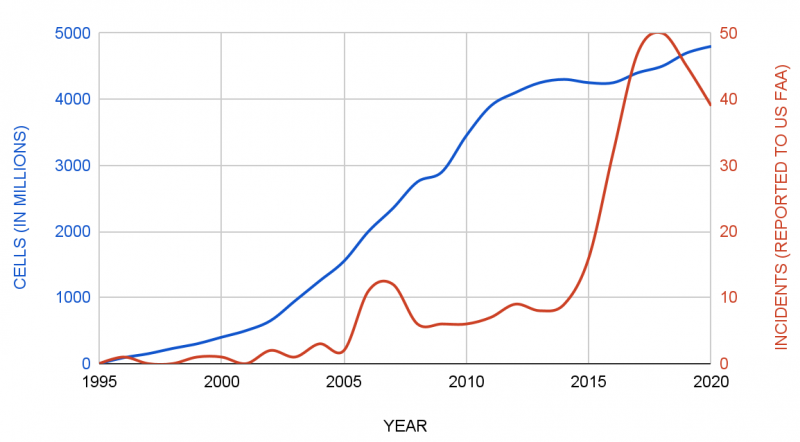In the today’s world, many people want to be connected and entertained. A life without portable electronic devices is hardly imaginable. Mobile phones, notebooks, tablets, cameras, e-book reader, e-cigarettes, smartwatches are electronic devices nobody wants to miss. Consequently, people do not only use them at home but take many of those electronic helpers with them.

The number of produced Lithium-Ion-Cells (blue line) is continuously growing over the last 25 year. The number of fire incidents and accidents on aircraft related to Lithium-Ion-Cells and batteries (red line) is rising strongly. However, most of those incidents have not left the incident status, i.e. no passenger or crew member has been hurt, but a level of several dozens of incidents, the vast majority of them in the cabin, are an alarming issue, which requires a scientific examination of the possible consequences and an assessment of the emergency procedures in place today.
The LOKI-PED project will provide a deeper understanding of the thermal runaway consequences and the associated risks and will raise awareness for critical situations from passengers and crew. Furthermore, operators will be enabled to conduct their risk assessment based on scientific information and authorities will be provided with evidence for the existing regulations or proposals for necessary improvements.
Thermal Runaway of Portable Electronic devices
Tasks and Time Table
2023
WP1 Characterization of the main hazards posed by lithium batteries and PEDs carried by passengers and aircrew in the cabin
2024
WP2 Evaluation of the consequences of fire and smoke
WP3 Assessment of the limits related to the number of batteries and the battery power / energy
WP4 Comparison of the risk scenarios with the limits established by the applicable regulations
2025
WP5 Assessment of the cabin emergency procedures
WP6 Assessment of additional mitigation measures
WP7 Identification of gaps in the regulatory provisions


